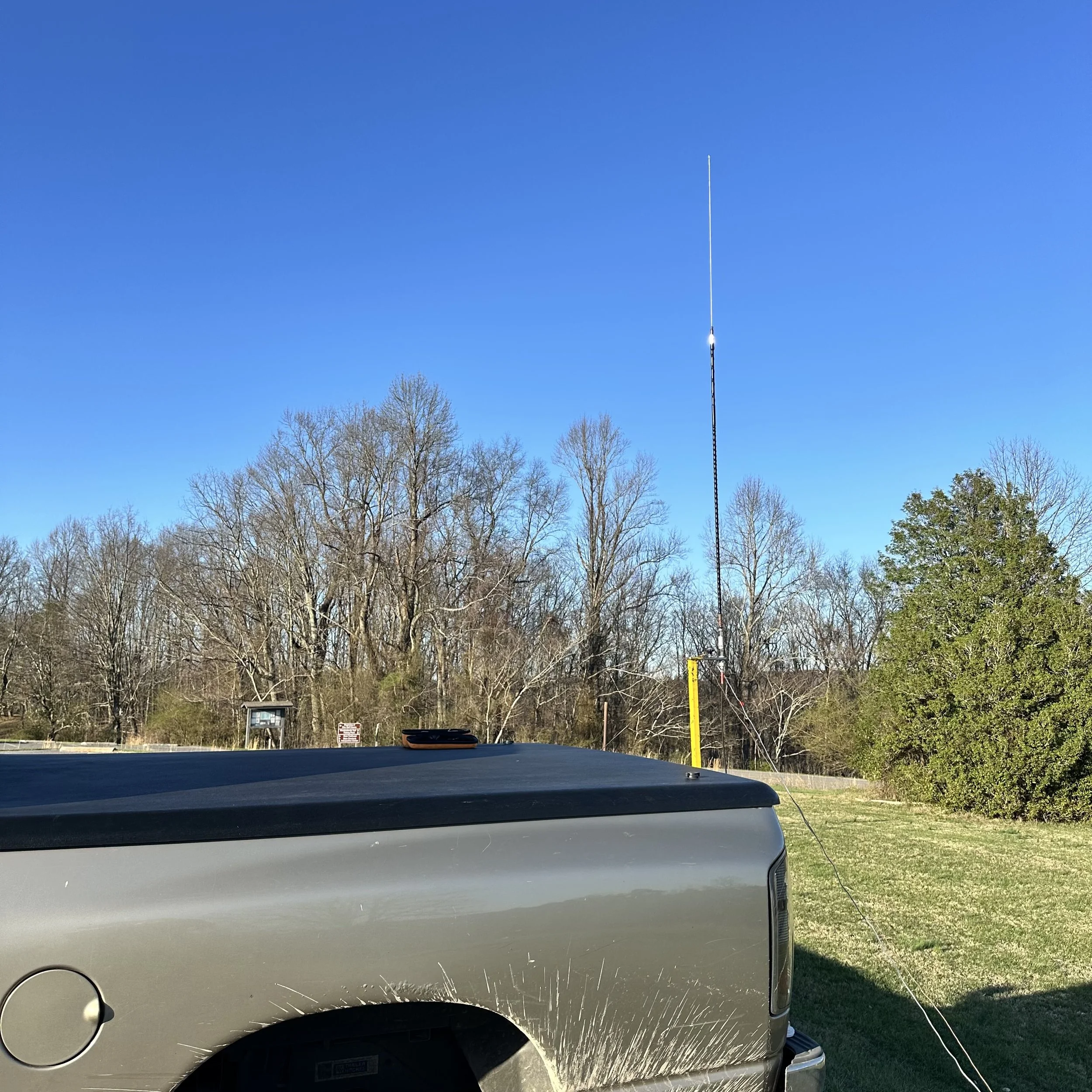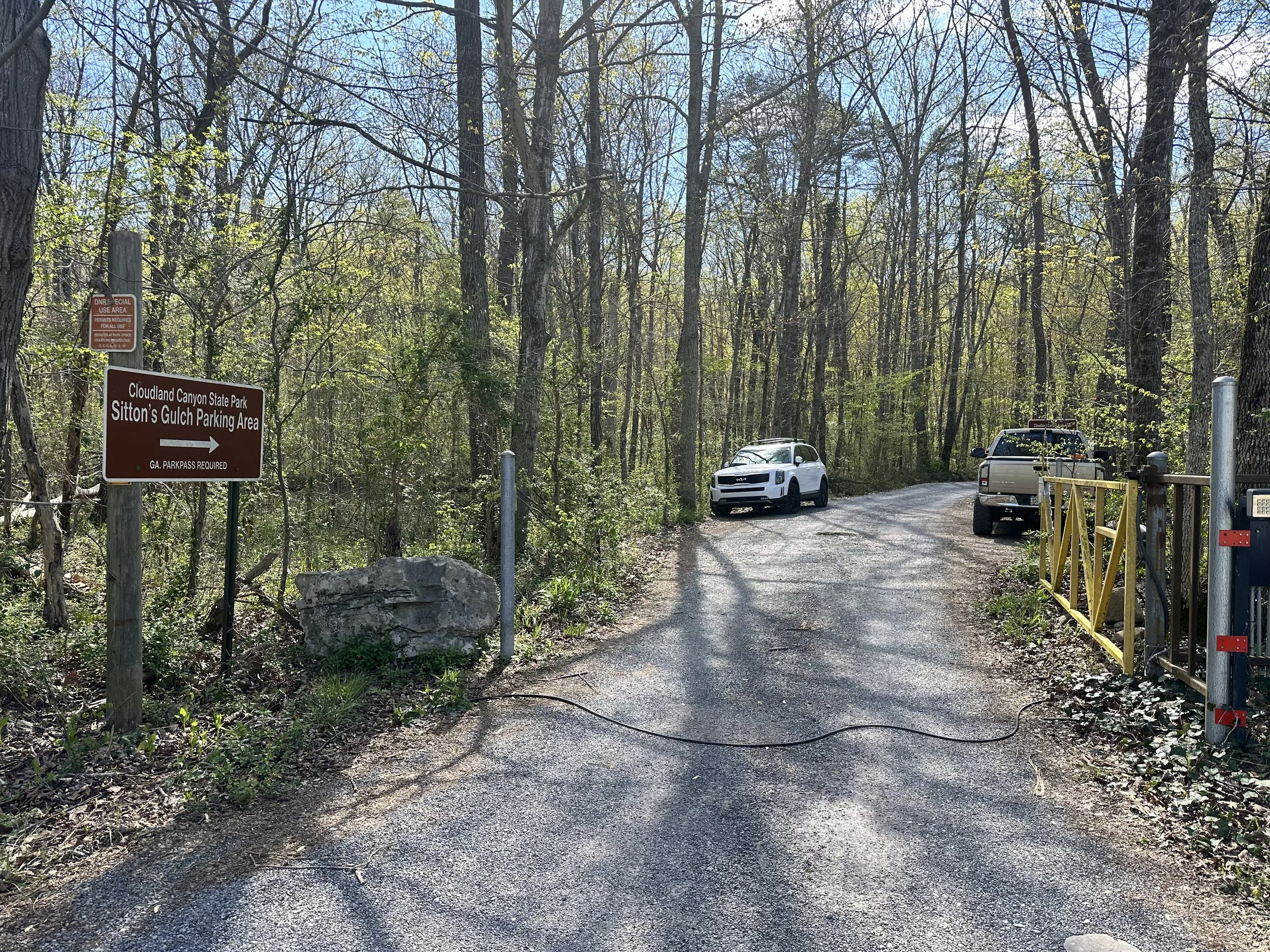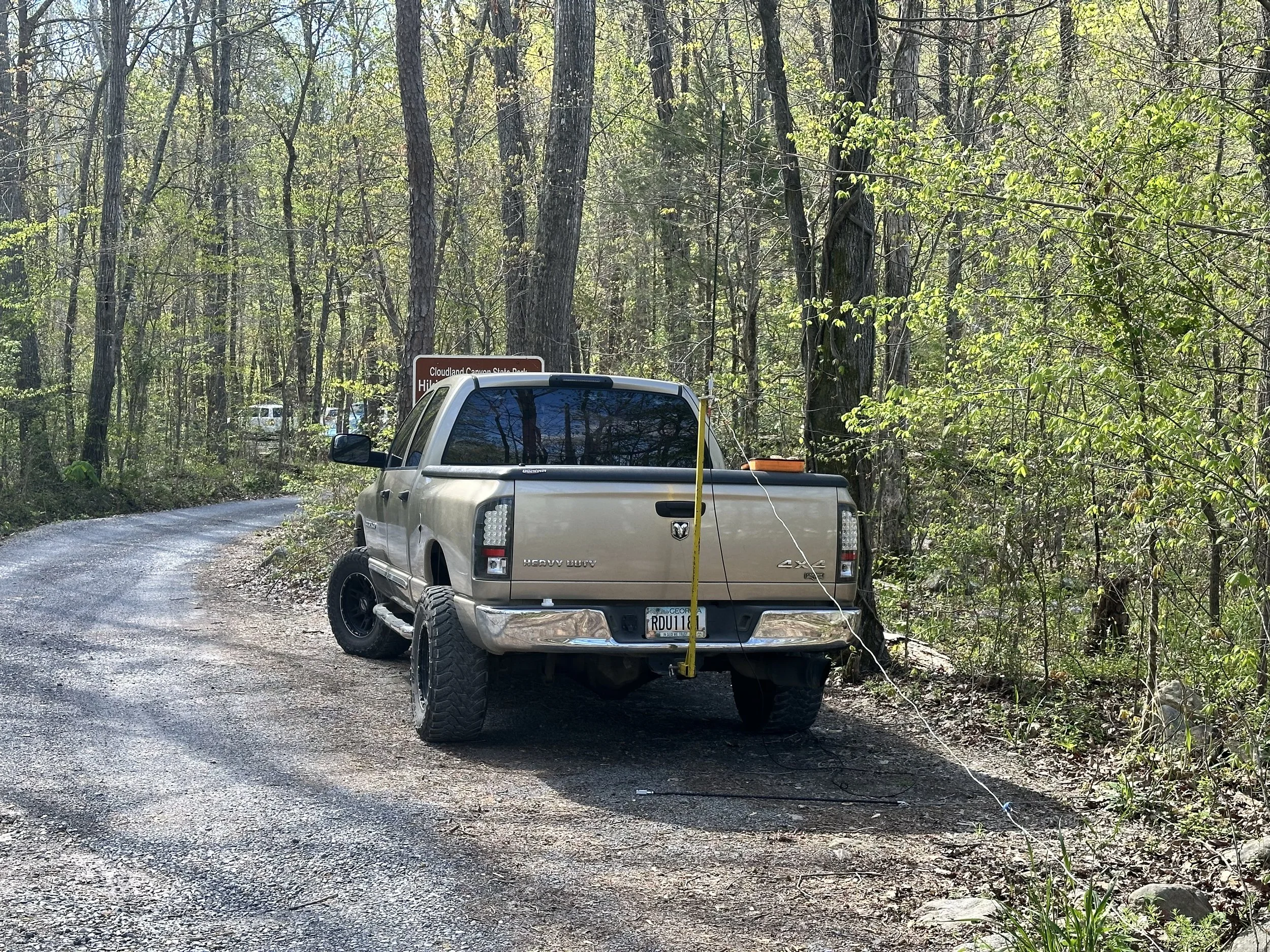Here it is, out in the rocks and weeds. This…this is a POTA activation. Take your radio out into the park, string up an antenna and connect a battery. See who is on the air and make some contacts. Today I decided to simply use CW and use my Ten Tec Argonaut 5 with a speaker wire antenna and my little MFJ 941 antenna tuner.
The kit also includes my N3ZN CW key and my Hamgadgets Picokeyer. These make the Argonaut one of my favorite POTA radios and for good reason, it is a perfect kit. I also have made up a cable that my keyer can connect to the microphone jack on the front of the radio, this is a lot easier than the tiny little port on the back of the radio.
I got the antenna strung up, with my throw-line kit, over the tree next to me as the tuner has the random wire connectors on the back of it. The wire was about 25” long and the two radials were some random length about 15’ or so and it tuned up on 20 meters just fine. It had enough bandwidth that I didn’t need to touch it after the initial tune with the nanoVNA.
I connected the nanoVNA and was able to tune the system fairly quickly without too much fuss. What I like about use the VNA in this application is that the transmitted signal is minimal and I can adjust what part of the spectrum I am looking at so I can find the resonant point and then make adjustments from there and walk it into band easily and visually. As I get closer to where I want it, I simply reconfigure the amount of bandwidth I am looking at and narrow it in. This is only needed if I am using something like this random wire that I have no idea where to start with for it. If it is a resonant antenna, then is is much simpler. Now, to be fair, the old method of keying on empty band space and tuning based on the SWR meter still works fine, but not all of my field radios have SWR meters on them so it is kinda tough to use from time to time like that. This method eliminates the need for a radio with a meter since it IS a meter and can see way more than the simple SWR value. I am once again going to recommend you pick up a nanoVNA and learn a couple of uses for it. Once you do, you will never go back to regular antenna analyzers (which are simple VNA circuits if I had to guess). On top of all that, they are crazy cheap these days too…it is hard to beat in my book.
The N3ZN CW Paddle (This is his little travel paddle with a base plate) and the Picokeyer are a match made in POTA heaven and are now a permanent part of my “POTA Shack” that I travel around with all the time. I take this little key and keyer with me everywhere just in case I have time to activate a park. You know, just in case…lol.
There are two things I really like about the Argonaut 5 in particular. One is that you can key the radio from the front as well as the back for CW. They list the PTT switch as a key input for CW, this is a straight key input only but it is a way to key the radio none the less. I have made up a cable that plugs into my Picokeyer so that I don’t have to use the tiny port on the back that is right next to the heat sink. I also have a RF choke on the line to help prevent stray RF from getting into the radio as well. This does seem to help to be honest about it.If the coax is near this cable it will key the transmitter and add unwanted characters to the CW without the choke inline. That is how I know it works…
The other thing is that the multi-function knob shown above does two jobs at once. So you use one knob to control two different things. The RIT and the Filter Bandwidth are both controlled from here. I normally leave it on RIT once I set the filter to what I want to listen to…usually 500 to 700hz if the band is quiet and 300 to 400 if it is crowded. Notice how well the buttons and knob are organized and even the information that they are displaying is located well, it is literally right above the control so it is in one cohesive place. This is superior engineering in my opinion and is a dying art…
In the photo below I am pointing at the truck where I normally setup to do POTA. That tiny, little, one car parking lot is a great spot if you are in a time crunch and want to play radio for a little bit, but it is really noisy with cars passing by and occasionally one of them is emitting RF noise to boot. This is the reason why I trekked all the gear 200 yards to this shady spot and setup with a battery instead today.
As you can see from the log above, the bands were strange today. At one point I have AE1ZR just vanish and never return… As you can see, I spent several minutes trying to raise him to complete the exchange and he just never returned to my receiver. Several stations took more than one try to get the data through at this time frame actually and I noted it in the log. But when it was open, I was able to work several Canadians as well as Minnesota. Not a bad day in the field with a random piece of speaker wire and a few watts of RF energy…
73
WK4ds




































































































































































































